 This lesson took five classes for my sixth grade students to complete.
This lesson took five classes for my sixth grade students to complete.I found this idea on the Artsonia website, but after trying to locate the source, I fell short. So, although the original idea was not mine, the lesson structure is....
It's a good idea to show a variety of farm/barn pictures just so the students get an idea for color choices, structures and backgrounds. Most art teachers know that the best sources for visual aids are calendars...so shop for them when they go half-price.
Day One: Cut tag board into 6" x 10" pieces. Each student gets one rectangle (or shares). I
 instruct them to trace a light pencil line around the tag board onto white watercolor or art paper. This is the size the barn will be. Then, the math begins. You can use your own dimensions, as they are fairly easy to figure out, or you can try to enlarge my picture above to see the measurements I used. Obviously, the idea is to use a grid to create the shape of a barn. The slope of the barn roof is created using different measurements for different pitches. I had all my students use one pitch but if you have a smaller class, a variety of pitches would make the barns more individual. Using pencil, we created the roof, side (need to extend beyond rectangle), barn door, windows and a loft.
instruct them to trace a light pencil line around the tag board onto white watercolor or art paper. This is the size the barn will be. Then, the math begins. You can use your own dimensions, as they are fairly easy to figure out, or you can try to enlarge my picture above to see the measurements I used. Obviously, the idea is to use a grid to create the shape of a barn. The slope of the barn roof is created using different measurements for different pitches. I had all my students use one pitch but if you have a smaller class, a variety of pitches would make the barns more individual. Using pencil, we created the roof, side (need to extend beyond rectangle), barn door, windows and a loft.





Day Two: At this point, all the kids have is a pencil grid with a few shapes inside. The rectangle is starting to look like a barn (or a funny hat as some kids pointed out) so now it's time to add background. I asked teh students to "frame" their windows (using rulers to draw and echo line around all doors and windows to make it look like a wooden frame), add a silo, and a fence.
Okay. Creating the fence. This is a challenging section. I instructed them to draw a post right beside the barn door, making it half the height as the door. Then, add another post way off to the side of the door and towards the bottom of the page (about 3 1/2" to 4" high). The farther the second post is away from the middle of the picture, the less angle the fence will have, and thus, an easier time creating it.
Tip: This is a good time to talk about Here, Near and Far:the closer an object is to the bottom of the paper, the larger the item will be; the closer to the top of the paper, the smaller the object will be.
So, now that the kids have two posts drawn, they can begin to make the dots that will eventually be used to create the fencing. On the small post (next to the door), have them draw two sets of dots: two near the top of the post, two near the bottom. Repeat this step with the larger post. Connect the dots using a ruler. The lines will be at a steep angle and you will lose many kids. Extra parents or aids in the classroom really is helpful at this point! Now that the kids have the fencing penciled in, have them draw one or two up and down posts. Now, creating a fence along the bottom of the paper is a lot easier, and if you understood my directions so far, this part will be easy to figure out on your own. If you didn't understand my directions, I don't blame you. Hopefully you are the visual type and can figure this out on your own!



Day Three: This is the day the kids add a simple background. Then using a waterproof pen, outline ALL pencil lines the students wish to keep. Pay special attention to the grid lines inside the barn frame: make sure the kids don't outline thses lines as they are not part of the drawing, merely guidelines.
Note: Some kids will be quick with this, so they can start painting (see below).



Day Four: Start painting! Using watercolor paints, I demonstrate how to mix colors to create interesting rural colors. Instead of painting the barn red straight from the palette, show them how to mix the red with brown or even blue. The results will be richer and deeper. For the background, show how to mix different shades of green (mixing with blue and brown and yellow). Ask the kids to paint their backgrounds many shades of green. For the sky, ask the student's to think of colors other than blue. Use orange and blue for a deeper, ominous sky; yellow and orange for a brilliant sunset.






Day Five: Finishing Touches/Details. This is the fun day. I show the kids how to paint blades of grass using wet-on-dry technique, clumps of trees in the distance and then finally, adding shading/wood panels on barn with a black pencil crayon.
I think the finished artwork proves that longer lessons yields great results!
Congratulations for all the 6th grade students at Brandon School for creating such wonderful pieces of art!

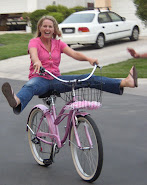






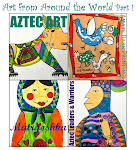
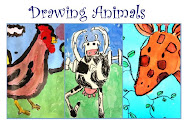
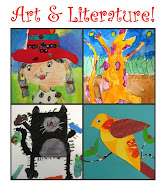


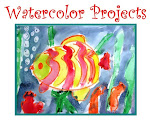





2 comments:
I absolutely love your site! I found it by accident last spring and have been "borrowing" from you ever since. This is my third year teaching art, but the first I am actually keeping afloat (many thanks to you). I teach 3 days a week K-8 for a small private school in the east, in a room I share with the music teacher. I was wondering why you have the students go over their lines with the water proof pen before painting? Could they go over them later, or not at all? Just curious, we are almost ready to paint. Thanks and please keep up the great work!
Good question!
I had to think about this for a while...
Going over the pencil lines before you paint is just a trick I use to ensure that the kids identify perspective. It shows that by outlining the fence first, it's less likely that the kids will draw "through" the fence when tracing the barn.
Also, by tracing over the pencil lines, the kids can then erase all unwanted lines giving them a clean picture to begin painting on.
Of course, you can have the kids paint right after the drawing with pencil stage, but they may want to erase all unwanted lines first or else they will show under the translucent paint.
Hope this helps explain my thinking!
Post a Comment